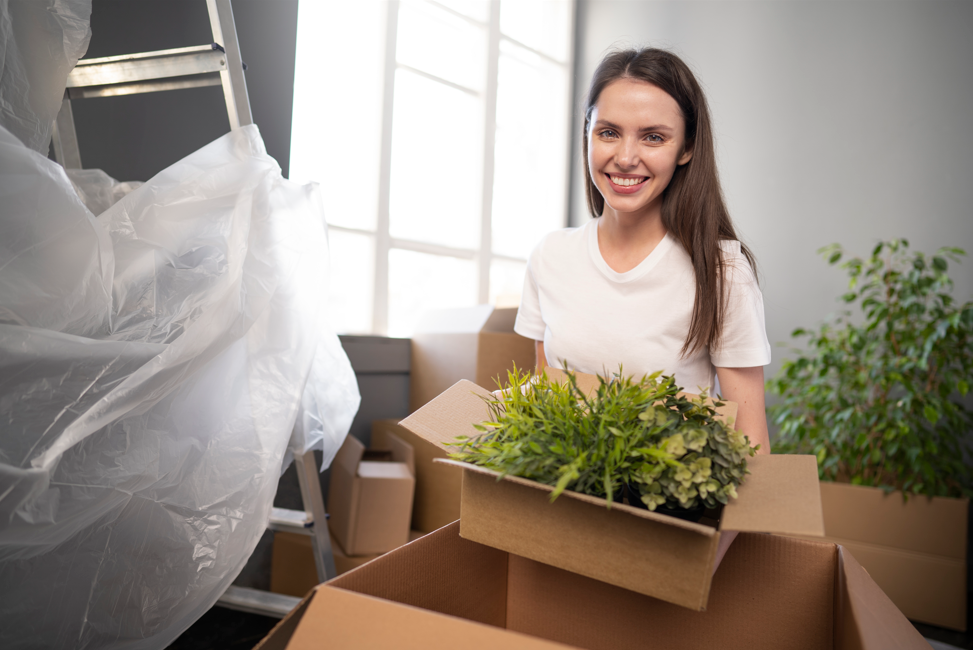
Moving homes involves careful planning for all your possessions, but plants require special attention to survive the transition. Many people find working with local movers who have experience handling delicate items makes the process much easier. Before packing your beloved greenery, you’ll need to prepare properly by evaluating their condition, trimming appropriately, selecting suitable containers, and planning for their immediate care upon arrival. This guide offers practical advice to help your plants thrive through the moving process with minimal stress and damage.
Assess Plant Health and Stability
Before moving your plants, assess their health and stability to ensure a successful relocation. Examine their overall condition, looking for signs of disease, pest infestations, or damage to leaves and stems. Check that roots are healthy and not root-bound. Strong, healthy plants have better chances of surviving the move. Test stability by gently shaking each plant to verify it’s firmly rooted in the soil. Plants that wobble excessively may need additional support during transportation. By evaluating your plants beforehand, you can address potential issues proactively and improve their chances of thriving after relocation.
Prune and Prep Plants
Preparing plants for moving requires proper pruning and preparation for transportation. Trim dead or damaged leaves, stems, and branches using clean, sharp pruning shears. This improves appearance and reduces energy requirements during transit. Remove dried flowers or fruits to prevent them from falling and creating mess. For larger plants, gently tie branches to prevent excessive movement. Water plants a few days before moving, but avoid saturating the soil to prevent spills. These pruning and preparation steps ensure your plants are in optimal condition for relocation, reducing stress and increasing their chances of thriving in their new environment.
Choose the Right Packing Materials
Selecting appropriate packing materials provides essential protection for plants during the moving process. Acquire sturdy cardboard boxes in various sizes to accommodate different plant types. Choose boxes with ventilation holes for proper airflow. Use packing paper or bubble wrap to cushion pots and prevent shifting during transport. Protect delicate foliage with plant sleeves or plastic bags. Peat moss or shredded paper helps secure soil and minimize spillage. Label each box with the plant’s name and care instructions. These carefully selected materials safeguard your plants and help ensure they arrive undamaged at their destination.
Secure Plants for Transportation
Plants must be firmly secured in boxes to prevent movement during transportation. Place crumpled paper or bubble wrap around each plant’s base for stability. Position pots snugly within boxes to prevent sliding or tipping. For taller specimens, use plant stakes or bamboo sticks to support stems and prevent bending. Secure loose branches or foliage with gentle ties or soft twine to minimize movement. Mark boxes with “Fragile” and “This Side Up” indicators to alert handlers to the delicate contents. These precautions significantly increase the likelihood of your plants arriving safely at their new home.
Unpack and Reacclimate Plants
Upon arrival, promptly remove plants from their boxes and begin reacclimating them to their new surroundings. Inspect each plant for damage or pests. Carefully remove packing material around the roots without disturbing the soil. Place plants in their designated locations, ensuring they receive appropriate sunlight and temperature conditions. Gradually resume watering, as plants may have experienced some dehydration during transit. Monitor them closely over the following weeks, adjusting care as needed to help them adapt to their new environment. Patience and attentive care are essential for successfully reestablishing your plants after relocation.
Related Topics:
